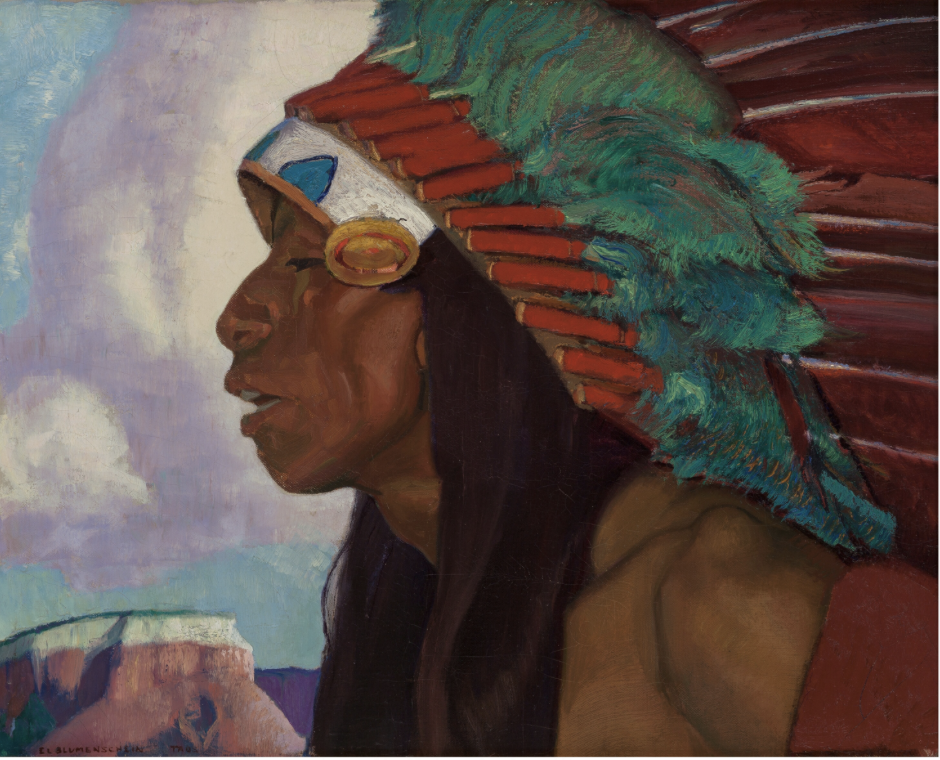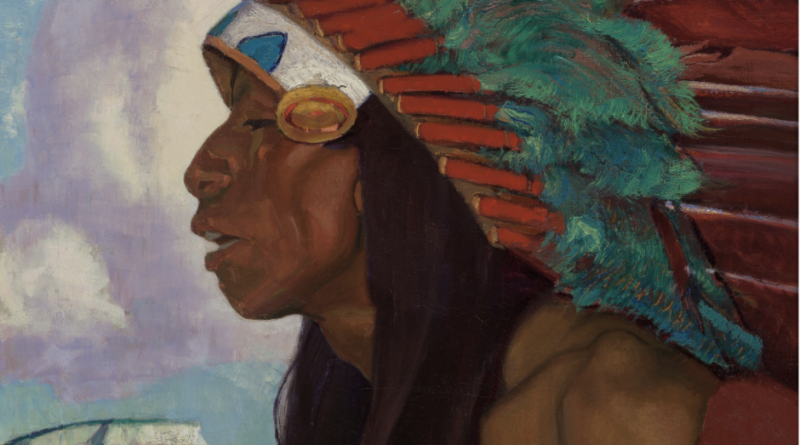‘Native American Power and Perception’ exhibit reflects the power of perspective
This new exhibit at the Tacoma Art Museum examines the close aligned relationship between non-Natives and Natives alike through portraiture.
The Tacoma Art Museum is currently showcasing the “Native Portraiture: Power and Perception” exhibit. It features several portraitures of Native Americans that range from classic western artwork to contemporary pieces as recent as 2017. While historically Native artwork is typically reflective of the U.S. western landscape, the museum says that it wants to break this stereotype by featuring more contemporary artists, particularly ones in the Pacific Northwest.
“Western art is laden with images of Native Americans that range from recordings of direct observations to highly romanticized, invented images,” the museum states on its website. Yet, many of these paintings are made by non-Native artists. What is communicated when an outsider portrays someone from another culture? How are these depictions different from when a person connected to a culture shares an individual or collective experience?”
When you walk into the exhibit, you are met with an enormous colorful oil-painted portrait of a Native American buffalo hunter. It mixes navy blues to create a darkened hue background with outlined black horses. A white ambiance shaded with strong brush strokes amplifies the figure in front. The Native with pale beige skin and dark long hair poses. He is wearing a white beaded necklace and small circle earrings. He has a traditional feathered headdress which distinguishes him from other tribes.

He is a member of the Crow Nation, which is known for having an enduring relationship with horses. Artist Kevin Red Star depicts the strong connection this buffalo hunter has with horses. Not only are horses a crucial part to their tribe’s well-being, this specific breed is important to track down buffalo to kill. The warm copper colors draw your attention to the figure’s body. The face is marked with white vertical lines that represent the figures significance to the tribe.
The artist Kevin Red Star has painted many other notable Native artworks including “Chief and his men,” “Counting Coup,” and “Crow Indians – Small War Party Departing” to name a few. He is a member of the Crow Nation and has made several artworks that are shown in dozens of galleries across the U.S.
Across the gallery from Kevin Red Star’s work is another portraiture titled “Taos Indian Chief” by Ernest Blumenschein. It is a depiction of a Plains Native American wearing a large red and turquoise feathered headdress. The picture is cropped and cuts off below the shoulders. We only see a glimpse of the red cloak he is wearing on top of his shoulders, but not what he is looking towards. It’s a classic western depiction of Indigenous people. The tan skin with classic Native attire. In comparison to other contemporary works at the exhibit, this one sticks to historical western style.

Typically, Native American artwork was painted by non-natives. George Catlin, a lawyer, author, painter and traveler was considered by many to be the most notable for depicting Native figures. One of this most famous works “Wah-ro-née-sah, The Surrounder, Chief of the Otoe Tribe” is an 1832 portrait that is currently housed inside the Smithsonian American Art Museum. It used dark hues and oversimplified textures. The colors blend seamlessly together and create a realistic appearance of the Native.
Many pieces of art at this time, during the 1800s, focused on creating idealistic depictions of people. It wanted to give the viewer an alluring experience of the artwork. Rather than reflect the intricacies and details of the subject, the inspirational and romanticized thoughts of the subject were reflected. As revered as Catlin was for his innovative works depicting Indigenous people, he was also highly criticized for his lack of awareness and overall attention to the Native experience and perspective. Through the romanticized appearance of Natives, he missed the true experience of their lives and messages they were revealing.
While many classic style art pieces reflect this similar idea, it is still a significant addition to the Native tribes. Several of the art pieces depict Natives in western, classic, contemporary and abstract. They all give a voice to an often overlooked group of people in the U.S.
The works depict several Indigenous tribes such as the Navajo Nation, Apsáalooke Nation, Pyramid Lake Paiute Tribe, Apsáalooke Nation, and much more.
If you would like to view any of these paintings, you can visit the Tacoma Art Museum Wed-Sun from 8 a.m. – 5 p.m. The “Native American Power and Perception” exhibit will be on display at TAM until March 17, 2024. Thursdays are open and free to the public, otherwise, you can purchase tickets in person or online through their website at https://www.tacomaartmuseum.org.



